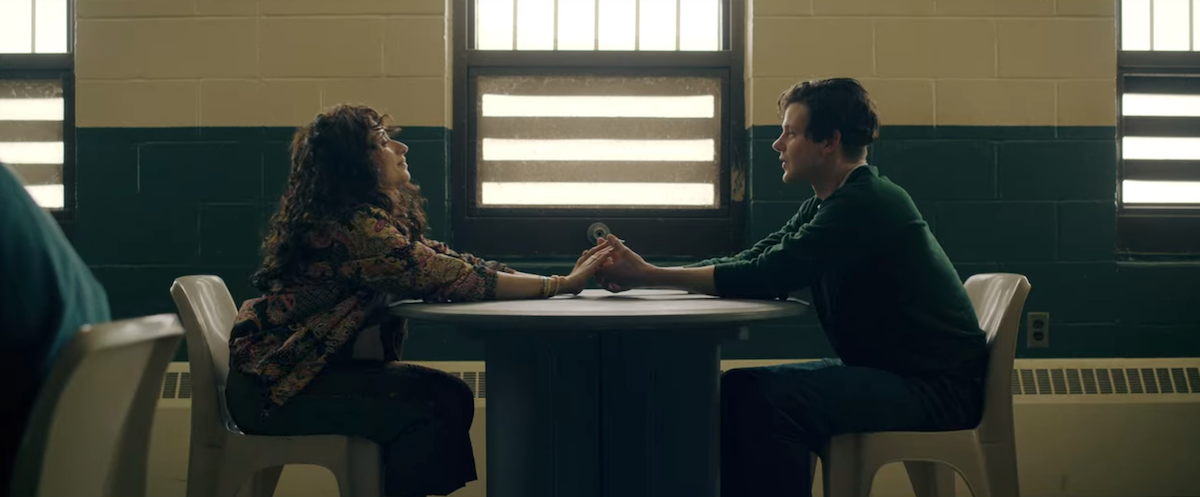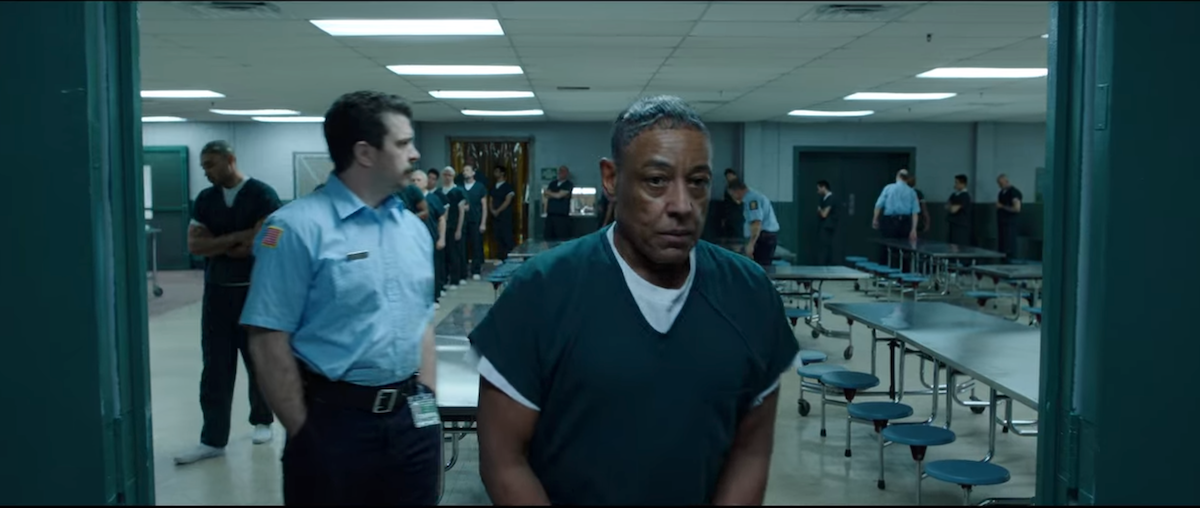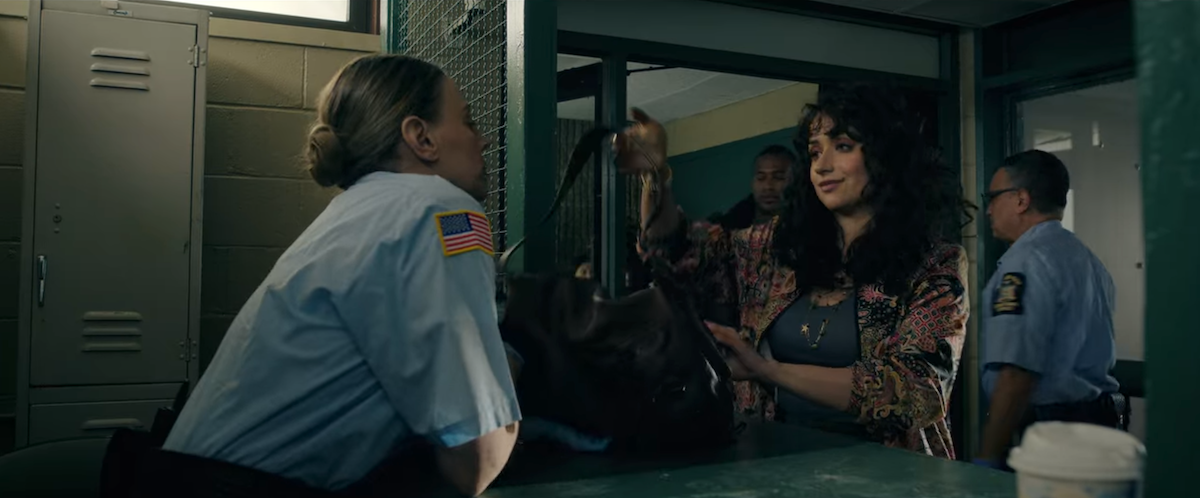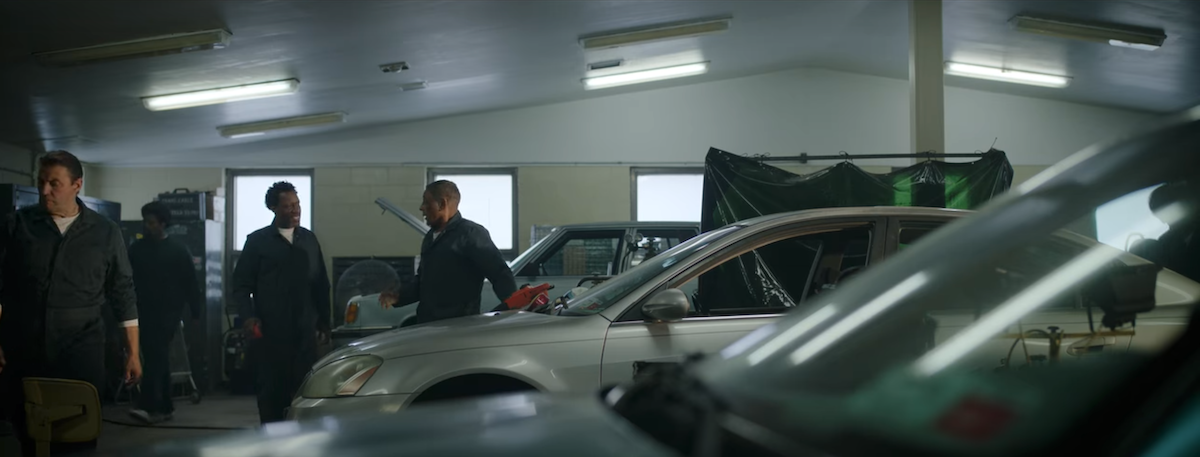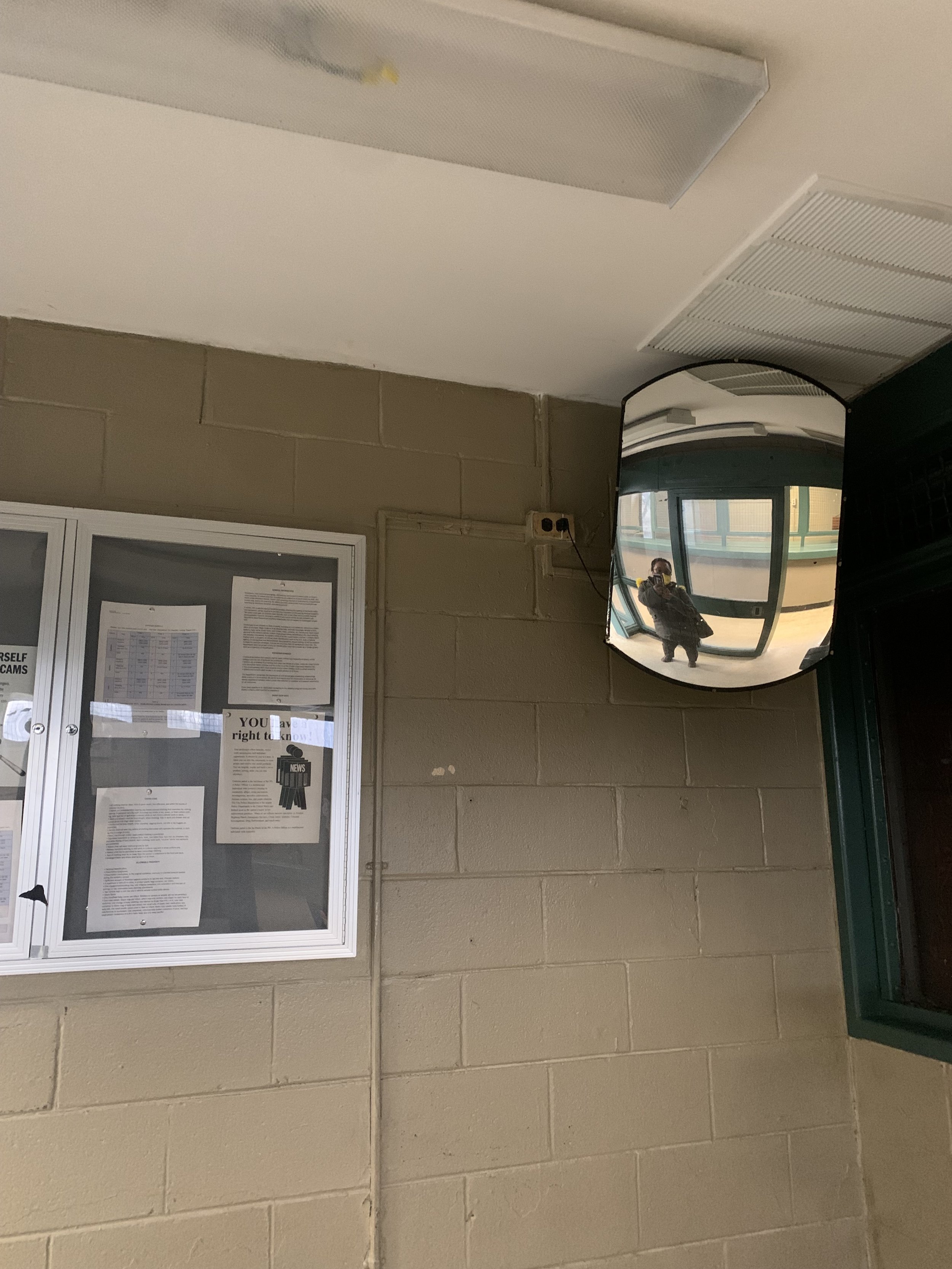For Episode Green of Netflix’s newest heist show Kaleidoscope, we were recreating over eight distinct sets in prison:
a visitation and waiting room (over two eras)
a prison cafeteria
a large working prison kitchen
a prison infirmary (that was itself made up of seven different sub sets: treatment room, doctor’s office, nurses’ station, record room, specialty treatment room, pharmacy, and hallways)
a security check entrance and guards station
a prison auto shop
a prison garden and outdoor workout area
and a prison cell plus guard booth.
For my first time working on decorating a prison set that was a lot of prison.
Working as a set decorator means that we all have to eventually work on a prison set.
To be honest I’ve been unusually lucky in my eight years as a set decorator, that this was the first prison set I was assigned. It was my turn, my time had come.
There are spaces where heightened moments of human life play out regularly: ER rooms, hospitals, police stations, jails, and prisons.
It is where people are often stretched to their extremes, where relationships are pushed to make or break moments, where consequences of previous actions are laid bare, and where actual life or death decisions are made.
If one is lucky, a normal life of going to work, doing your laundry, paying your cellphone bills, making dinner, and watching something on streaming before going to sleep does not usually visit these sites of extreme human drama that often.
some welcoming gates that say “you made it to work.”
Recreating the spaces where heightened and dramatic reality play out for characters in movies and TV, however, is the job as a set decorator.
That means in turn that ER rooms, hospitals, police stations, jails, prisons are sets my colleagues and I are regularly trying our best to replicate with anthropological accuracy and some artistry.
Most people will intersect with a hospital room or even an ER room in their lifetime because sickness and death are just a fact of life. Prisons don’t necessarily need to be a reality for anyone.
And yet, in our fun little industry of make believe where we can create fantastical scenes where elves live in cozy homes or where characters break into song and everyone around them joins in to dance in the supermarket, we are constantly recreating the grim and violent reality of prisons.
There are award winning movie classics like Shawshank Redemption or popular streaming hits like Orange is the New Black and Escape from Dannemora.
On one hand, it makes sense as America is the most carceral state in the world so any representations of American life on screen would by extension naturally include prisons. On the other hand, why are we constantly recreating prisons for entertainment?
There is nothing entertaining about America’s prison system, sadly.
It is so unentertaining that most of the time we like to keep the deadening reality of prison hidden away. Prisons are whole ecosystems tucked away from daily life—purposely built away from society. And similarly most of us who have that privilege to not regularly interact with the carceral system, have the luxury of pushing prison out of our conscious personal life.
Yet we also happily visit prison regularly on the television and movie screens we turn to for thrills and inspiration and drama and comfort.
For a bunch of people (mostly pretty privileged) who moved to NYC for a creative career that paid well enough that we can spend lunch chatting about cute brunches, live concerts, and international travel, directing a lot of attention towards recreating prison is usually a non-threatening work exercise that has almost no overlap with our personal lives.
And yet two months working on these prison sets affected many of my coworkers and me.
In order to come up with plans, move furniture around, change paint colors and build new walls and doors and attend to the details of creating the eight sets in prison for the episode, key members of the art department initially visited the abandoned Arthur Kill Prison facility in Staten Island, the site for all our sets, multiple times.
Afterwards, together with a group of set dressers, I basically decamped to this abandoned prison and set up shop there from January to early March, everyday 10 hours a day.
We all walked the long cavernous halls of the abandoned prison that still have a red line down the center of the floor, feeling the cramped feeling of low ceilings, scant windows, and views of endless coils of barbed wire layered upon itself.
We can feel the walls dripping with sorrow and heaviness. Even while empty you could feel the sadness, violence, and despair vibrating off the walls.
We don’t need to ask “If these walls could talk.” They speak to us in the language that we are trained and professionally work to communicate in: their design, decoration, and built intention.
The stenciled sign of “Limit Calls to 15 min” sprayed above the 5 pay phones affixed to the brick wall reminds us how little connection to the outside world is afforded people who find themselves on this side of the wall.
The sign in Spanish elucidates the statistic that 23% of incarcerated population is Latinx or at least Spanish speaking.
A single stray Hans Wegner style wishbone chair sitting lonely in the hallway stands out like a lost child who inadvertently stumbled onto the wrong side of the tracks.
Every time I pass it I want to ask, what’s a nice chair like you doing in a place like this? A place where stacks of interchangeable plastic chairs and old soulless office task chairs look more at home.
That empty space ricocheting with the collected energy of people imprisoned seeped into the walls was impacting each and every person who walked in there.
Coworkers and I share the anxiety, depression, and scattered effect on the mind working daily in a prison has on us. We talked about how eerie, odd, and dark and heavy it was to devote so much energy on recreating the details of human imprisonment.
One colleague who was just visiting for a day to help us hook up all the surveillance monitors talked about how spooked he was by the gloom of the site just sitting in the guard’s booth for a few hours.
Colleagues who never have to visit the site of the abandoned prison but are tasked with drawing up construction plans remark on how surreal it is to draw out plans for prison cells on computers even from the comfort of their home offices.
The challenge was to make each prison set accurate and authentic while also finding a way to stylize the sets to be all shades of green.
One of the conceptual hooks of working on Kaleidoscope, is that each episode is its own color and each episode can be watched in any order. They are categorized by color not chronological order and prison was green.
The thing about designing and decorating a fake prison for entertainment is: reality is grim, recreating this from reality even grimmer, and stylizing it seems delusional.
So the only way to survive it seemed to be personalizing prison and showing the humanity in the face of this scourge. This made me determined to get to the personalized and human level of prison research
I talk a lot more about the process of researching and putting together the green sets for prison in this post here.
You could say my emotional state completely domineered by recreating prison is partially my fault for really plunging into the research feet first, and on top of that seeking out all sorts of supplementary engagements with prison outside of work.
I attended a documentary screening made with a drone about the floating boat fortress prison in The Bronx, watched an opera a colleague designed which is an update on Fidelio (Beethoven’s opera about prison) and commentary on contemporary mass incarceration, read Ruth Wilson Gilmore’s “Is Prison Necessary?” and all of a sudden noticed anything and everything related to prison and America’s mass incarceration problem and ingested it.
It led me to some really dark corners of the internet. For instance how seemingly proud (?!!?) the official US Bureau of Prisons seems to be about a long historical legacy of using prison labor to manufacture products. I guess I really thought that as a society we might be ashamed of that?
When I really started to spiral though was when I started to search for the specialized door hardware and locks needed to create authentic prison doors and locks.
I came across many companies that profit handedly at selling specialized locks to prison companies to the tune of around $2,000 a door handle. One company in particular will haunt me for the rest of my life.
Yes their slogan is “to last a life sentence.” When you call the company to inquire about purchasing items the recorded phone tree message is a cheery woman saying “Built to Last A Life Sentence!” as if she was wishing you a Merry Christmas.
I haven’t stopped talking about this harrowing company slogan to anyone who will listen ever since.
It wrecked me that in pursuit of making our sets as authentic as possible, we were paying so much more money to enrich the literal prison industrial complex and all the specialized companies that create furniture and supplies specifically to serve prisons.
I felt determined that if we were going to spend a quarter million dollars recreating the violence of prison for entertainment and enriching the companies that blithely profit from mass incarceration we had to find a way to support organizations doing good work to end mass incarceration and support people who got out of prison.
A prison industrial complex carbon offsetting credits of sorts.
If it affected us so much to be in an empty prison with the luxury of going home each night, I can only imagine how much more it must affect each person imprisoned there, who works there, and the violent way it chips away at your basic connection to humanity.
Working together with our unparalleled coordinator Jackie, we approached Netflix accounting to see if we could donate the proceeds of our sale of remaining furniture and set dressing decoration at the end of the show to two organizations that seemed to be doing really positive work:
Hour Children is a local organization in NYC I’m pretty familiar with that works with families affected by incarceration, particularly children who have an incarcerated parent. I’ve visited the offices and met the people running the programs and touched with their sincere commitment.
Rehabilitation Through the Arts (RTA) which “helps people in prison develop critical life skills through the arts, modeling an approach to the justice system based on human dignity rather than punishment.”
Together we were able to donate $25,000 from our set sales and Netflix these two organizations.
For all the money we spent further enriching the companies profiting off incarceration, and the deep emotional toll it took on me personally (I was pretty depressed for three months afterwards), at least we were able to support these two organizations doing healing and positive work in some way.
I thought that mass incarceration was one of America’s biggest problems for a while, but after the two months in that abandoned prison in Staten Island, and all the research I did about the details of prison radicalized me into a prison abolitionist.
Probably not the intended outcome for someone whose job it was, among other things, to find lots of green prison cafeteria trays.


